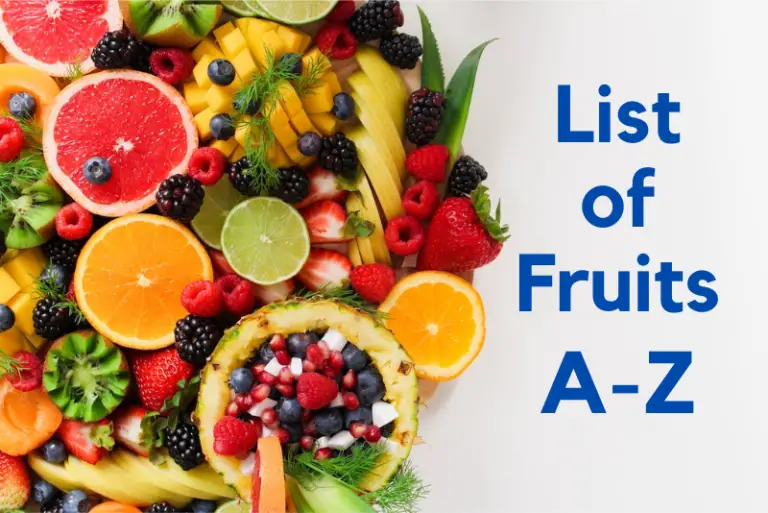What Does Crab Taste Like?
Quick Answer
Crab has a sweet, briny flavor that is less “fishy” than other seafood like fish or shrimp. Its texture is generally tender, flaky, and slightly stringy. Cooking methods and accompanying spices or sauces can influence its taste, but overall, crab is often considered to have a more delicate and nuanced flavor compared to other seafood.
What is Crab?
Crab is a type of marine crustacean characterized by a broad, flat body covered by a hard exoskeleton and two large, powerful claws.
They are part of the order Decapoda, which also includes lobsters, shrimp, and other similar creatures.
Crabs are found in oceans, freshwater habitats, and on land, depending on the species.
They are a popular seafood delicacy and are harvested for their meat, which is used in various culinary dishes around the world.
What Does Crab Taste Like?
Crab is often lauded for its unique and appealing flavor profile. At its core, crab meat is sweet and briny, capturing the essence of the ocean in each bite. Unlike other types of seafood such as fish and shrimp, crab has a less pronounced “fishy” flavor. This makes it accessible even to those who might be hesitant about trying seafood.
Comparison to Other Seafood
When compared to other popular seafood options like lobster and shrimp, crab holds its own in both flavor and texture.
Lobster is often similar in sweetness but has a more buttery, less briny flavor and a firmer, chewier texture.
Shrimp, on the other hand, can be more elastic in texture and has a stronger, more pronounced sea flavor.
Each of these seafoods has its own merits, but crab is often considered to have a more nuanced and delicate flavor profile, making it a standout choice for many seafood enthusiasts.
What Is The Texture Of Blue Crab Like?
The texture of crab meat complements its flavor well. It is generally tender, offering a melt-in-your-mouth experience when cooked properly.
The meat is flaky, breaking apart easily when bitten into, but it can also have a slightly stringy or fibrous quality, particularly in some cuts or species.
This variety in texture makes crab an interesting and engaging food to eat, as different parts of the crab can offer slightly different textural experiences.
Types of Crab and How They Differ in Taste
Blue Crab
Blue crabs are found primarily in the Atlantic Ocean and the Gulf of Mexico and are renowned for their sweet, succulent meat. This species is especially popular in the U.S., particularly in the Mid-Atlantic and Southern states. Blue crab taste is rich and buttery with a delicate sweetness that’s less briny than some other types. Blue crabs are often used in dishes like crab cakes and crab boils.
King Crab
Native to the cold waters of the Bering Sea, King crab is the heavyweight champion of crabs, known for its large legs and claws. The meat is incredibly rich, with a unique sweetness and a hint of saltiness. It has a firmer texture compared to other types, making it ideal for recipes that require a meaty bite, like salads or pasta dishes.
Snow Crab
Snow crabs are often found in the northern Pacific and Atlantic Oceans. They offer a more delicate flavor compared to King crab, and the meat is tender and flaky. Snow crabs are known for their long, spindly legs, which are filled with easily accessible meat. They are often enjoyed simply, steamed with butter, to highlight their subtle sweetness.
Dungeness Crab
Native to the west coast of North America, Dungeness crabs are known for their sweet, slightly nutty flavor. They offer a balance between sweetness and brininess, and their meat is tender, yet slightly more fibrous than Blue or Snow crabs. Dungeness crabs are often used in a variety of dishes, from bisques to salads.
Other Relevant Species
- Stone Crabs: Known for their large claws, stone crabs have a rich, somewhat mineral flavor and are usually served chilled with mustard sauce.
- Mud Crabs: Popular in Asia, these crabs have a strong, earthy flavor that pairs well with spicy or robust sauces.
- Soft-Shell Crabs: These are typically Blue crabs caught during their molting phase, and they are eaten whole. The taste is similar to Blue crab but with a softer texture.
FAQs
How Does Crab Compare To Other Seafood Like Shrimp And Lobster?
Crab is often considered to have a more nuanced and delicate flavor than shrimp and lobster. Shrimp has a stronger, sea-like flavor and a more elastic texture, while lobster is buttery and less briny with a firmer, chewier texture.
Does The Taste Of Crab Vary Depending On The Species?
Yes, different species like Blue Crab, King Crab, Snow Crab, and Dungeness Crab each have their unique flavors and textures, ranging from sweet and delicate to rich and meaty.
What Are Some Popular Ways To Cook Crab?
Common cooking methods include steaming, boiling, grilling, roasting, and frying. Each method can bring out different aspects of the crab’s flavor.
Can I Eat Crab Raw?
Eating raw crab is not recommended due to the risk of foodborne illnesses. Always cook crab to a safe internal temperature.
What Are Some Popular Accompaniments And Sauces For Crab?
Butter, garlic, lemon, and Old Bay seasoning are commonly used to enhance or complement the flavor of crab.
Can Crab Taste “Fishy” If It’s Not Fresh?
Yes, crab that is not fresh can develop a stronger, more off-putting “fishy” smell and taste. Always purchase crab from reputable sources and consume it as soon as possible for the best flavor.
Does The Cooking Method Change The Texture Of The Crab?
Yes, different cooking methods can influence the texture. For example, frying can make it crunchy, while boiling or steaming retains its natural, tender texture.
What is the Smell of Crabs?
Fresh crab should have a clean, briny scent that evokes the ocean. It shouldn’t smell overly “fishy” or have any off-putting or sour odors. A strong, unpleasant smell is often an indicator that the crab is not fresh and should be avoided. Handling and storage conditions also influence the smell, so always buy from reputable suppliers to ensure the best quality.
What is the Best Tasting Crab?
Determining the “best tasting” crab is largely subjective and can depend on personal preference. However, King Crab is often cited for its rich, sweet, and slightly salty flavor, along with its meaty texture. Blue Crab and Dungeness Crab are also highly prized for their delicate, sweet flavors. Each type of crab offers a unique taste experience, so trying various species is the best way to find your personal favorite.
Which Part of the Crab is not Edible?
While crab meat is widely enjoyed, certain parts of the crab are not advisable to eat. The “dead man’s fingers” or gills should be removed, as they filter impurities and can be harmful if ingested.
Additionally, the crab’s digestive tract or “mustard” should also be avoided. Always consult preparation guides or experts when handling a whole crab to ensure you’re consuming the safe and tasty parts.
What Does Crab Claw Meat Taste Like?
The meat from a crab’s claw is often considered to be some of the sweetest and most flavorful part of the crab. It tends to be tender yet firm, with a texture that many describe as “melt-in-the-mouth.” Claw meat is versatile and can be used in a variety of dishes, from crab salads to crab cakes and more.
Can Crab Be Dangerous To Eat?
Crab is generally safe to eat when properly sourced, stored, and cooked. However, consuming spoiled or contaminated crab can lead to food poisoning.
Additionally, some people are allergic to shellfish, including crab, and should avoid it altogether. Always cook crab to the recommended internal temperature and buy from reputable sources to minimize risks.
Is Dead Crab Edible?
It’s generally not advisable to eat crab that is already dead before cooking, as the meat spoils quickly and can harbor harmful bacteria. Always cook live crabs or crabs that have been freshly killed and properly stored to ensure safety and optimal flavor.
Does Crab Taste Like Fish?
While crab is a type of seafood, its taste is often described as less “fishy” than that of most fish. Crab has its own unique flavor profile: sweet, briny, and delicate. Even people who are not fans of fish might find crab to be more to their liking due to its subtler, less overpowering flavor.



